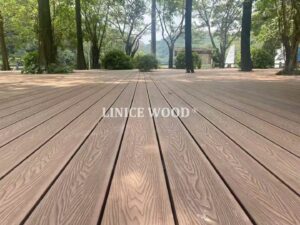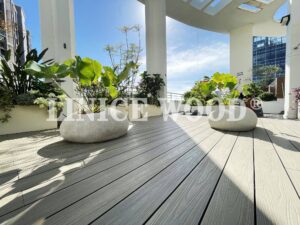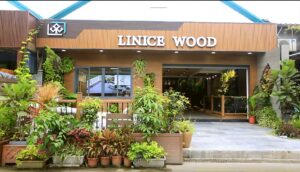For decades, the choice for backyard privacy and curb appeal was largely limited to wood (requiring high maintenance) or vinyl (lacking warmth and realism). Today, a superior alternative has redefined the market: the Horizontal Composite Fence.
Blending the best of modern materials science with timeless design, horizontal composite fencing offers the rugged, contemporary look of horizontal slats with the unparalleled durability and low maintenance of composite materials.

This guide will serve as your essential resource for everything you need to know about horizontal composite fences.
What is Horizontal Composite Fence?
A horizontal composite fence is a fencing style where the boards are installed horizontally instead of vertically, creating a modern and sleek look.It made of durable material: Made from wood-plastic composite (WPC), resistant to rot, moisture, insects, and fading.
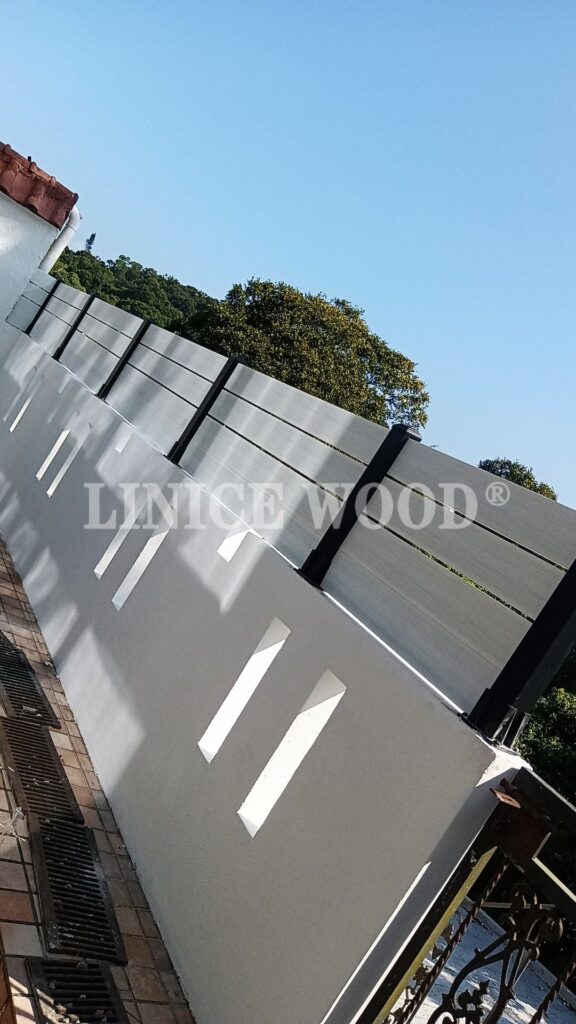
What Are the Advantages of Composite Fencing?
If you’re researching fencing options, you’ve probably run into composite fencing. It’s that sleek, modern-looking material made from a mix of recycled wood fibers and plastic.
Composite fencing comes with many benefits that explain why so many homeowners are choosing it.
The main advantages of composite fencing are low maintenance, durability, eco-friendliness, long lifespan, and a consistent modern look. It won’t rot, warp, or splinter like wood, it’s resistant to pests, and it requires little more than the occasional rinse to stay looking good.
👉 Want the details? Let’s break it down.
1. Low Maintenance
One of the biggest selling points of composite fencing is how little work it takes to maintain:
- No painting, staining, or sealing needed.
- A quick wash with soap and water (or even just a garden hose) is usually enough.
Compare that to wood, which needs regular staining or sealing, and you start to see the time savings.
2. Long Lifespan and Durability
Composite fencing is built to last. You can expect it to stick around for 20–30 years with minimal upkeep.
It holds up well against:
- Rot and decay
- Insects like termites
- Harsh weather (rain, snow, intense sun)
Where wood can warp or splinter, composite usually stays solid and stable.
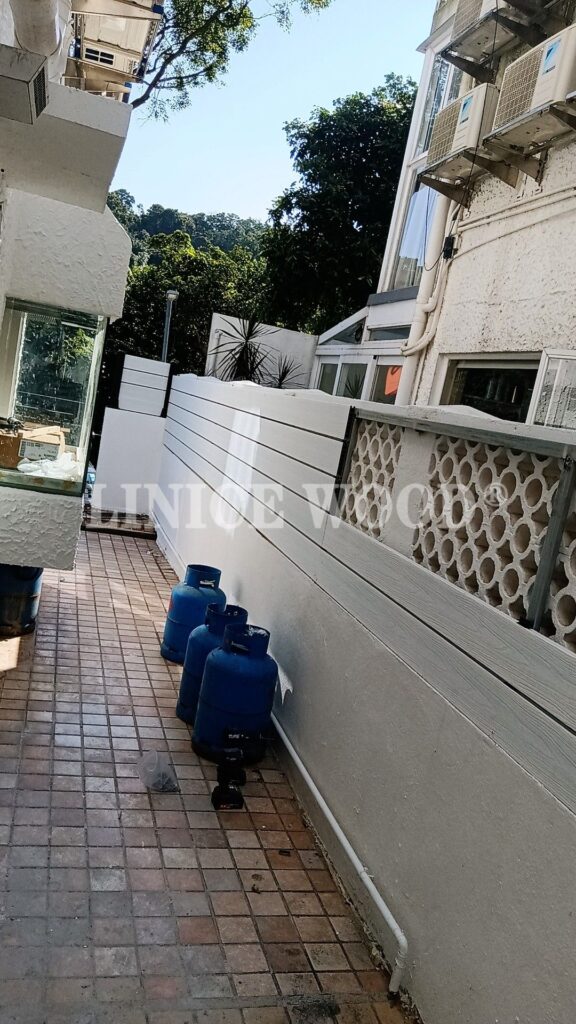
3. Eco-Friendly Choice
Most composite fencing is made from a mix of recycled wood fibers and plastics. That means fewer trees are cut down and less plastic ends up in landfills.
If sustainability matters to you, this is a strong plus.
4. Modern, Consistent Look
Composite fencing has a clean, uniform appearance. Unlike wood, you don’t have to deal with knots, cracks, or uneven boards.
And because the boards are manufactured, the color and style stay consistent across your whole fence line—giving your yard a polished look.
5. Variety of Styles
While you can’t paint it any color like wood, manufacturers have stepped up their game in recent years. You can now find composite fencing in a range of colors, textures, and finishes that mimic the look of natural wood or offer sleek, modern tones.
6. Long-Term Cost Savings
Yes, composite costs more upfront. But because you don’t need to spend money on paint, stain, sealant, or frequent repairs, it can actually save money in the long run.
Think of it as paying for convenience and peace of mind upfront.

7. Strong and Sturdy
Composite boards are heavier and denser than wood or vinyl. That means once they’re installed, they provide a sturdy barrier that’s not easily knocked over by strong winds or a playful dog.
8. Easy Install
Pre-assembled panels: No need to measure and cut each board.
Consistent sizing: Unlike wood, composite boards don’t warp or vary in size.
Minimal tools needed: Most kits require just a post-hole digger, concrete, level, and basic hand tools.
Lightweight options available: Newer hollow-core designs are easier to lift and handle than older solid boards.
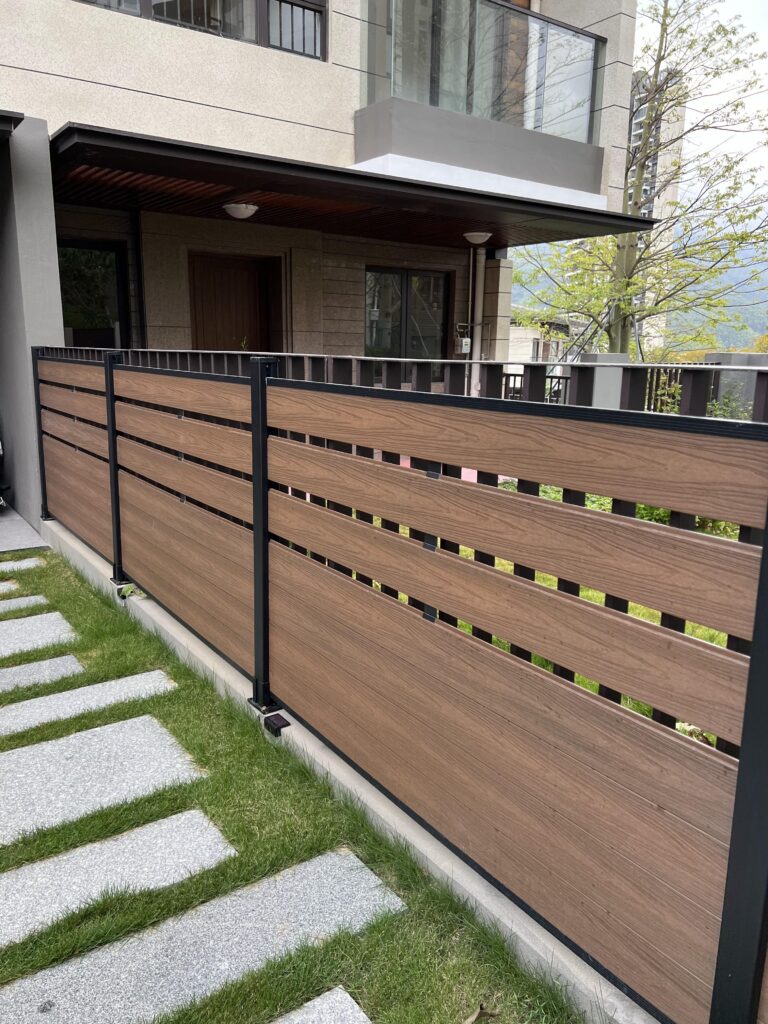
What Are the Disadvantages of Composite Fencing?
Composite fencing comes with a few drawbacks that you’ll want to think through before pulling out the credit card.
The biggest disadvantages of composite fencing are higher upfront cost, limited color choices.
1. Higher Upfront Cost
This is the first thing most people notice. Composite fencing costs more than wood or vinyl upfront. Depending on the brand, you could be paying 2–3x more per linear foot compared to standard wood.
Yes, it may save money over time because it needs less maintenance… but if you’re on a tight budget, the initial price tag can sting.
2. Limited Colors and Styles
Unlike wood, which you can stain or paint however you like, composite fencing usually comes in a few factory colors. If your fence gets scratched or you change your mind about the color scheme later, you don’t have a ton of options.

Is Composite Fencing Easy to Install?
Yes — composite fencing can be easy to install, especially if you use a kit system. Many designs use pre-measured posts, rails, and panels that fit together smoothly, making the process much simpler than traditional wood fencing.
Why It’s Easier Than You Thin
- Pre-assembled panels: No need to measure and cut each board.
- Consistent sizing: Unlike wood, composite boards don’t warp or vary in size.
- Minimal tools needed: Most kits require just a post-hole digger, concrete, level, and basic hand tools.
- Lightweight options available: Newer hollow-core designs are easier to lift and handle than older solid boards.
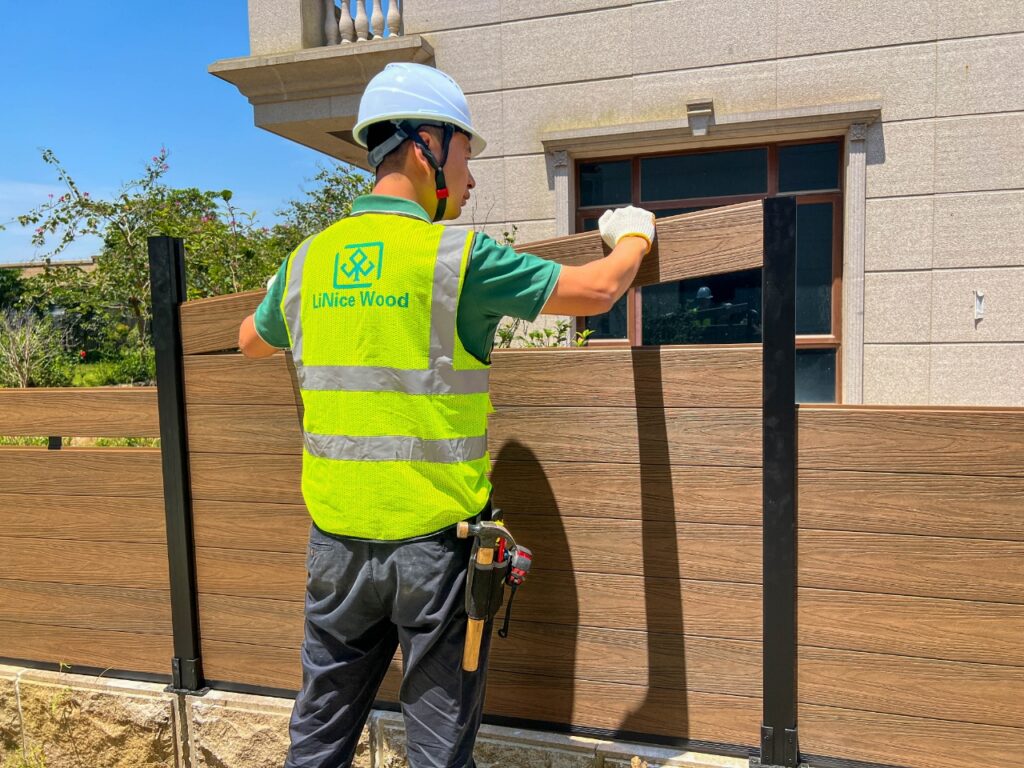
DIY-Friendly Installation
If you’re handy at all, installing composite fencing is very doable. The basic steps look like this:
- Dig post holes and set the posts in concrete.
- Slide or snap in the rails and panels.
- Secure with the provided hardware.
- Finish with caps or trim pieces.
Many homeowners can complete a small yard in a weekend.
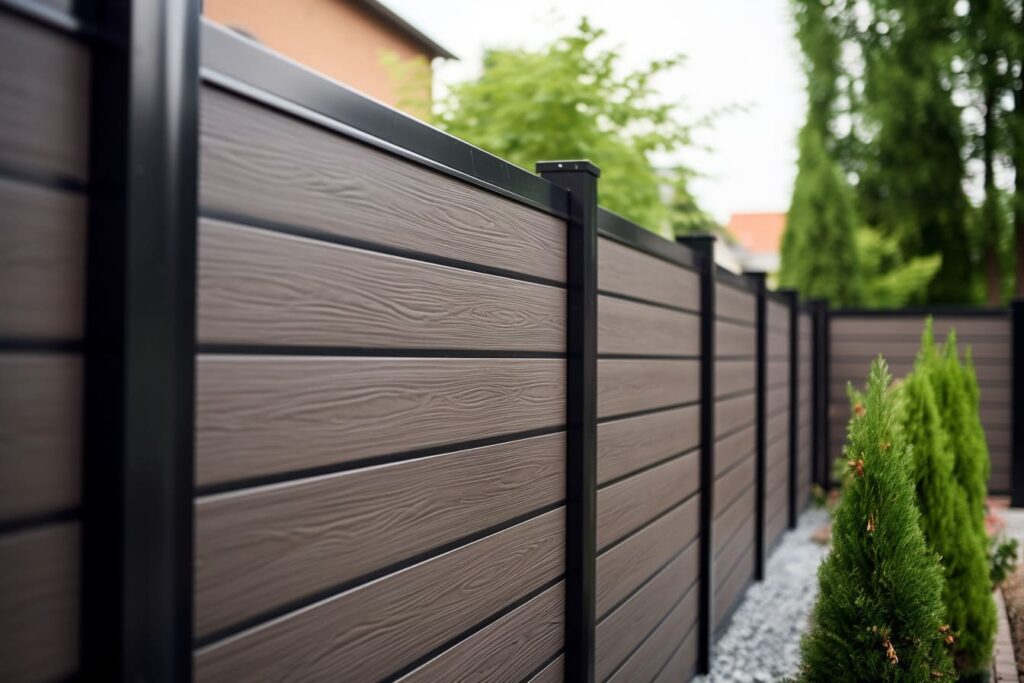
Why a Horizontal Fence Can Be Better Than a Traditional (Usually Vertical) Fence?
Horizontal fences look modern, create a sense of openness, offer flexibility, and can be more durable and low-maintenance compared to traditional vertical fences.
Here’s a clear comparison of why a horizontal fence can be better than a traditional (usually vertical) fence:
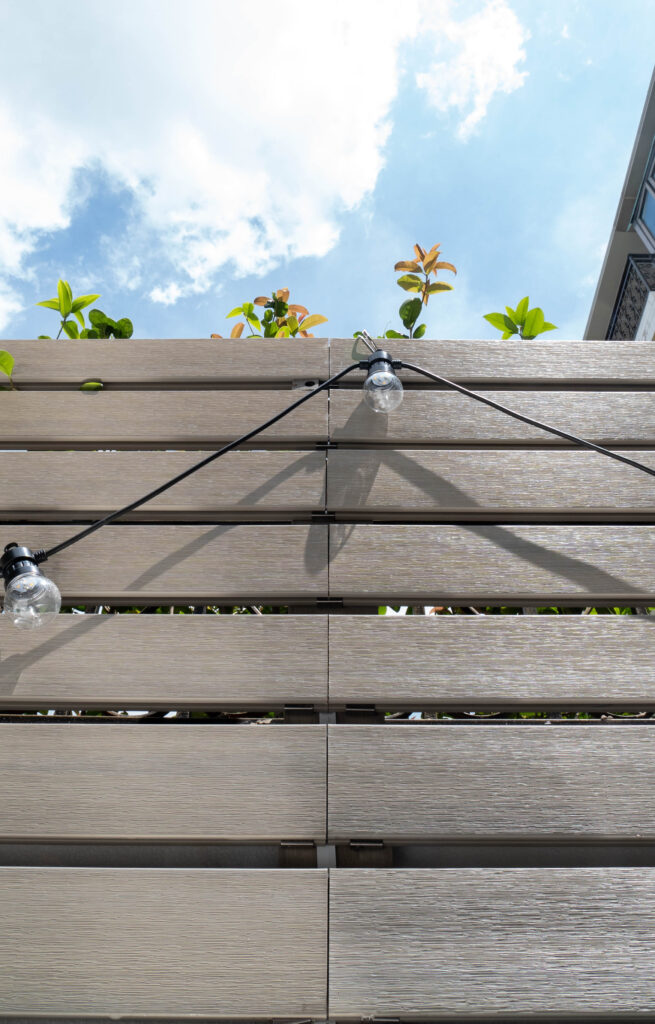
1. Modern & Stylish Look
- Horizontal boards give a sleek, contemporary appearance.
- Traditional vertical fences often look more old-fashioned or “classic.”
- Great for modern homes or commercial properties wanting a clean aesthetic.
2. Sense of Space
- Horizontal lines make spaces look wider and more open.
- Vertical fences can make areas feel taller but narrower.
3. Customizable & Flexible
- You can play with different board widths, gaps, and patterns.
- Easier to combine materials, colors, or textures to match landscaping.
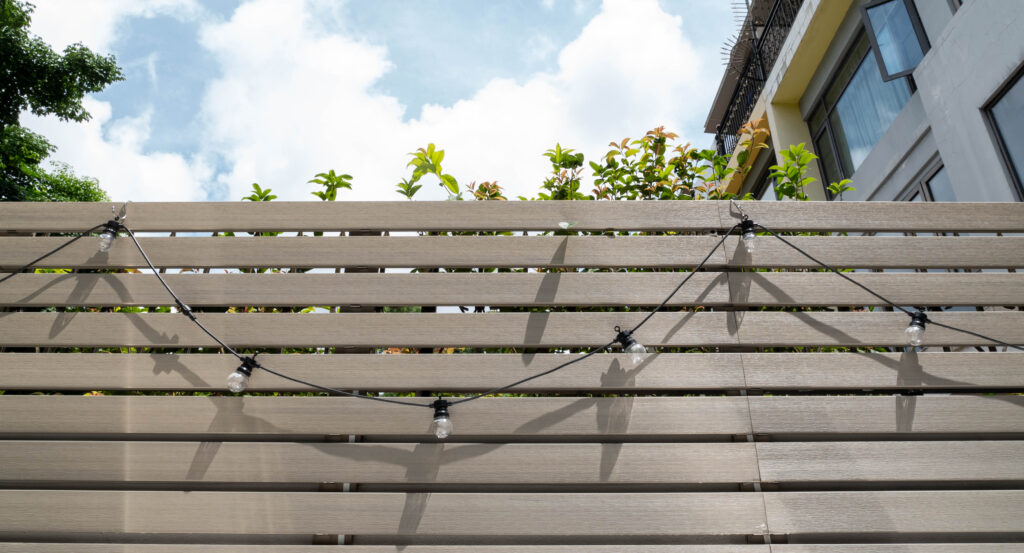
4. Better Integration with Landscaping
- Works well with gardens and patios; plants can grow along the fence horizontally.
- Easier to layer or step boards for uneven ground.
5. Privacy Control
- You can adjust the spacing between boards to control privacy while still allowing light and air.
- Vertical fences usually either block completely or need extra features for privacy.
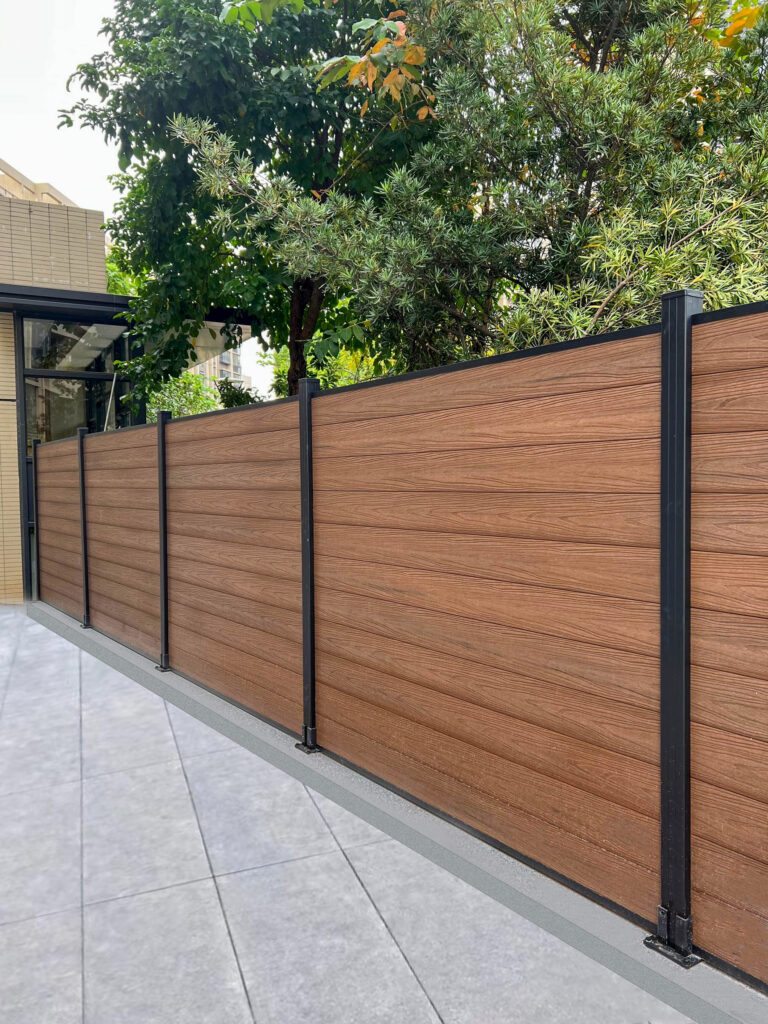
6. Easier Maintenance
- Horizontal fences are often easier to clean because dust and debris don’t get trapped as easily as vertical slats.
- Some horizontal panels are pre-finished, reducing the need for painting or staining.
7. Durability & Stability
- High-quality horizontal fences often use composite materials (WPC, metal, or treated wood) that resist warping.
- Vertical fences may warp or split over time due to gravity and weather exposure.
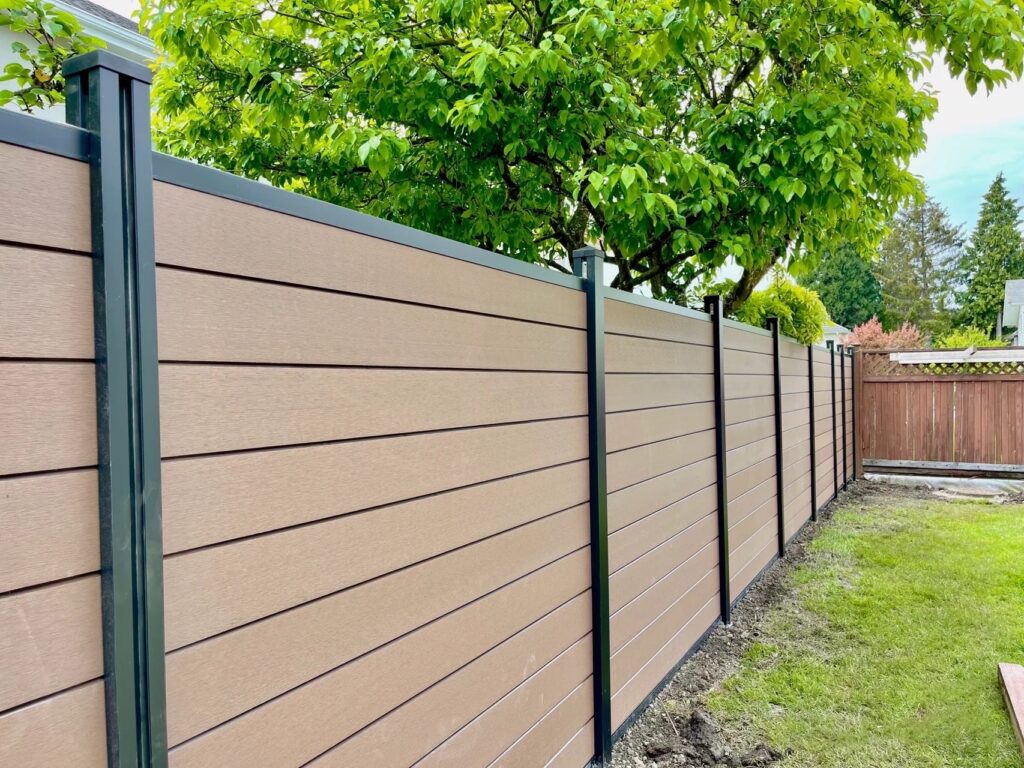
3 Types of Horizontal Composite Fence
The beauty of a horizontal composite fence lies not only in its material but also in its versatility.
By changing the board profile, spacing, and configuration, you can achieve vastly different looks to match your home’s architecture and your personal style.
Here are the primary types of horizontal composite fences available.
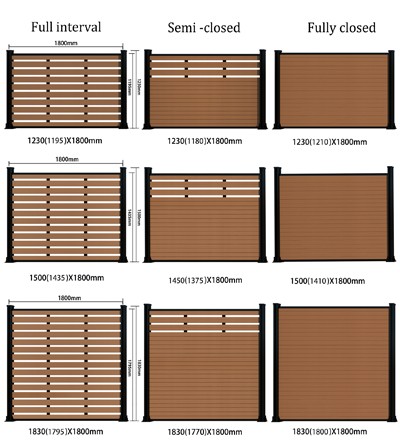
1. Fully Closed (Total Privacy)
This style creates a solid, uninterrupted barrier, offering the highest level of privacy and seclusion.
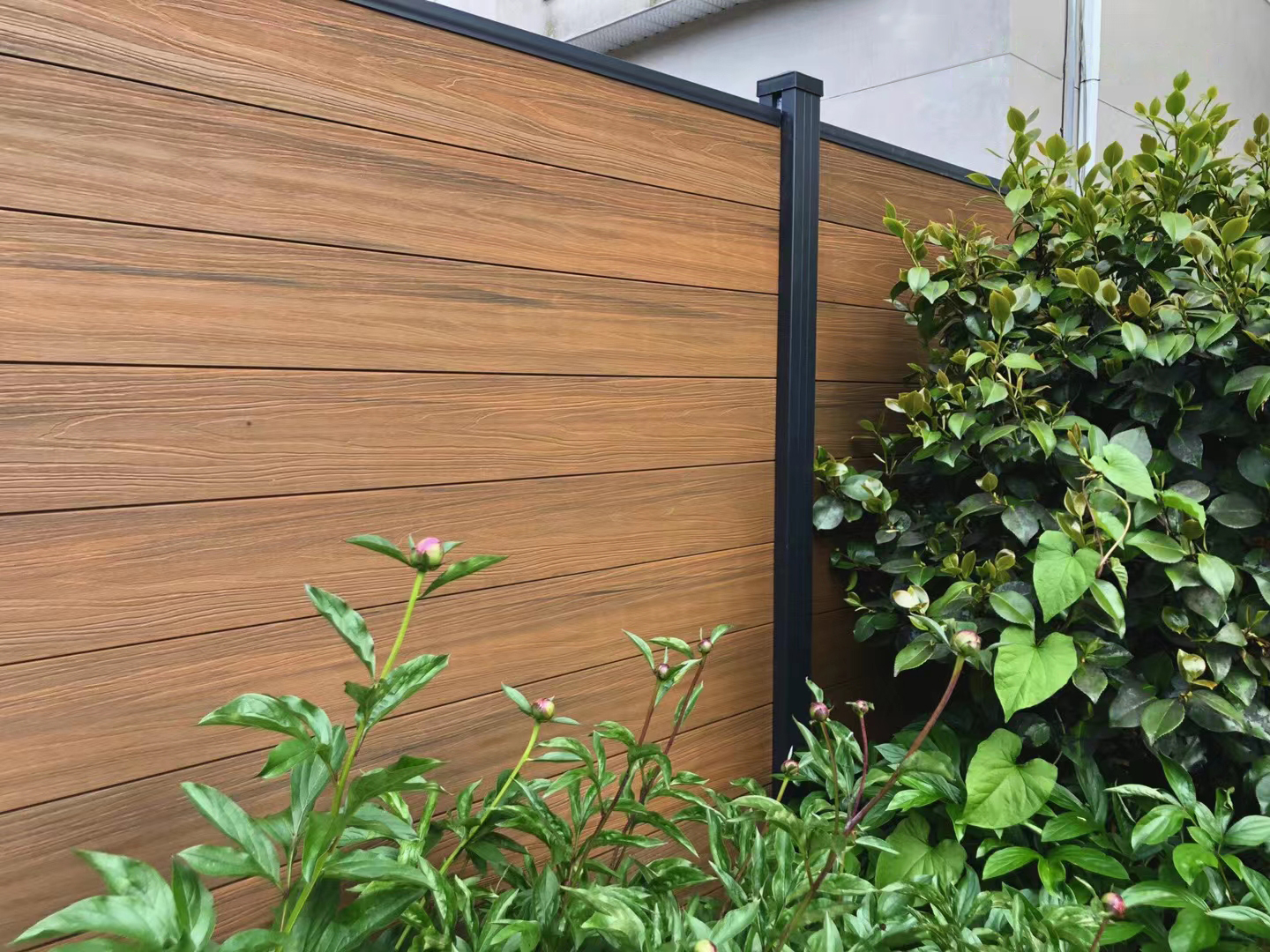
- Description: Composite boards are installed tightly together with no gaps, forming a solid, modern wall. The construction is often achieved with a hidden clip system or face-fastened boards to create a seamless appearance on both sides.
- Key Characteristics:
- Maximum Privacy & Security: Completely blocks the view into and out of your property.
- Superior Noise Buffer: Acts as an effective sound barrier against street noise and neighbors.
- Complete Wind Block: Provides full protection from wind, creating a calm microclimate in your yard.
- Modern & Uniform: Delivers a clean, intentional, and sleek architectural look.
- Ideal For: Urban homes, properties close to streets or neighbors, and creating a private oasis for pools, hot tubs, and outdoor living areas.
2. Semi-Closed (Filtered Privacy)
This style strikes a perfect balance, offering defined boundaries and privacy while allowing for light and air to flow through.

- Description: This category includes styles built with consistent, intentional gaps between the horizontal boards.
- Spaced Slat Fence: The most direct example, with gaps typically between 1/2″ to 2″.
- Shadowbox Fence: Boards are alternatingly attached on opposite sides of the rails, creating a semi-permeable barrier with a finished look on both sides.
- Key Characteristics:
- Filtered Light and Air: Maintains an open, airy feel without fully enclosing the space. Prevents the yard from feeling cramped.
- Partial Visibility: Provides a degree of privacy while maintaining a connection to the surrounding environment.
- Wind Resistance: The gaps allow wind to pass through, reducing the physical load on the fence structure during storms.
- Dynamic Design: Creates attractive patterns of light and shadow throughout the day.
- Ideal For: Perimeter fencing, pool enclosures (to reduce wind load), properties with pleasant views, and homeowners who want definition without complete isolation.
3. Full Interval (Open Screen)
This style is used primarily for definition and aesthetic appeal rather than privacy, functioning as a modern screen or railing.

- Description: Features widely spaced horizontal composite boards. The gaps are significantly larger than the boards themselves, making the openness the dominant feature.
- Key Characteristics:
- Open Sightlines: Purposefully designed to not block views, making it ideal for properties with scenic vistas.
- Pure Definition: Clearly marks a boundary without creating a visual or physical barrier.
- Maximum Airflow: Offers virtually no resistance to wind.
- Architectural Element: Used as a decorative design feature, for terracing on sloped lots, or as a modern porch or deck railing.
- Ideal For: Defining property lines on large lots, creating garden partitions, use as deck railings, and properties where the goal is to enhance a view rather than block it.
LiNice Wood – WPC Composite Fence Manufacturer in China

LiNice Wood are one of the leading composite fence manufacturers in China, specializing in producing high-quality, durable, and eco-friendly fence solutions.
If you want to buy composite fence for your outdoor projects, pls feel free to contact us for more information or a custom quote!

